It was built by none other than Miguel López de Legazpi, known as El Adelantado, the man that created the first European settlement in the East Indies in what is now the Philippines, following his expedition across the Pacific Ocean. It was in this newly established city, deep within the “Intramuros,” that Miguel López constructed his citadel.
The name that he gave to this fort was to honor Saint James or Santiago once translated into Spanish. The legend of this saint, known as the Muslim slayer, is that around 100 years after his death, he reappeared to fight once more in the battle of Clavijo.
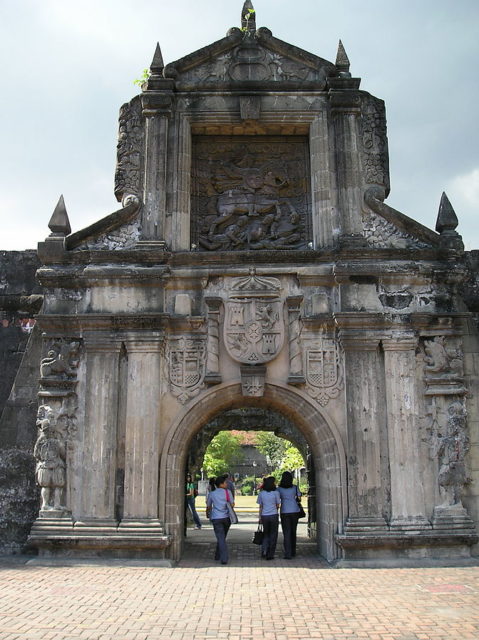
The relief of this saint still adorns the front gate of Fort Santiago. The fort itself stands on the banks of the River Pasig and in its day it was a strategic location of immense importance. Standing so close to the river meant that the fort also played an important part in the spice trade route and held this position for hundreds of years.
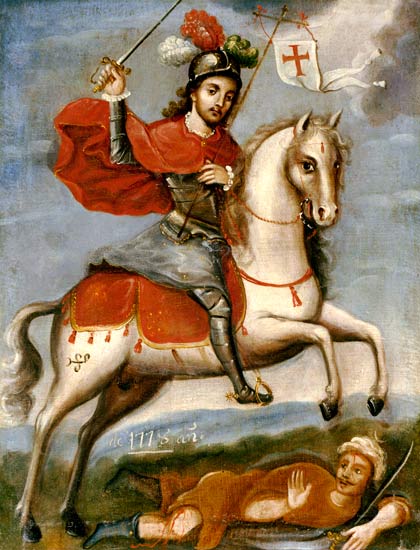
According to historians, before Fort Santiago came to be, there once stood a paling fort – type of a structure made of wooden poles that also served as a defensive structure.
This older fort was destroyed in 1570 by Martín de Goiti, a soldier that was involved in the colonization of the East Indies. A number of battles were fought on these grounds against the local Muslims after which the new city of Manila was formed. The construction of the fort began in 1571 on June 24th.
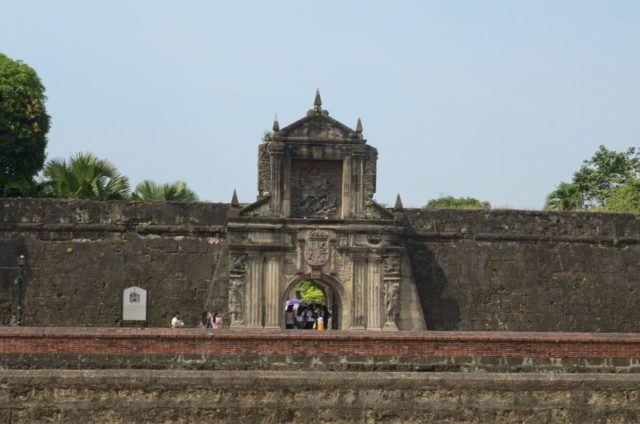
But this early fort was not made of stone, but rather of mere dirt and palm trees. Such a weak structure was easily destroyed by a gang of Chinese pirates led by Ah Hong the warlord. During the ferocious fighting, Martin de Goiti lost his life. After his death, the Spaniards were led by Juan de Salcedo. With time, they have managed to get rid of the pirates. First, they pushed them to the province of Pangasinan and from there, out of the Philippines.
The building of the stone fort began in 1590 and lasted for three years, ending in 1593. A volcanic ash known as tuff was used in the construction and was quarried from Guadalupe Viejo – back then known simply as Guadalupe.
Once completed, the fort took the shape of a trapezoid and had no towers but had a gun platform named Santa Barbara. The fort also had a number of arches that allowed for casemates to the formed which further created a lower line of fire that carried out through a number of openings known as embrasures.
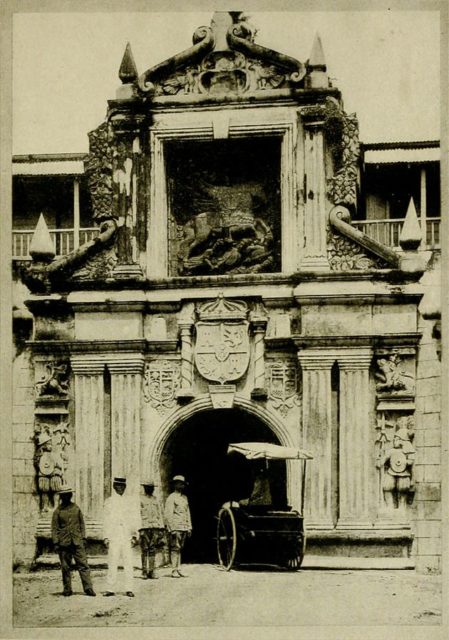
During the 1730s, a new gun platform was added to the fort. The platform was called “Media Naranja” or “Half-Orange.” In the 1760s, the fort was attacked by the British forces and subsequently captured along with Manila. That is when the Royal Navy moved into the fort. They remained there until 1764 when a ceasefire was negotiated.
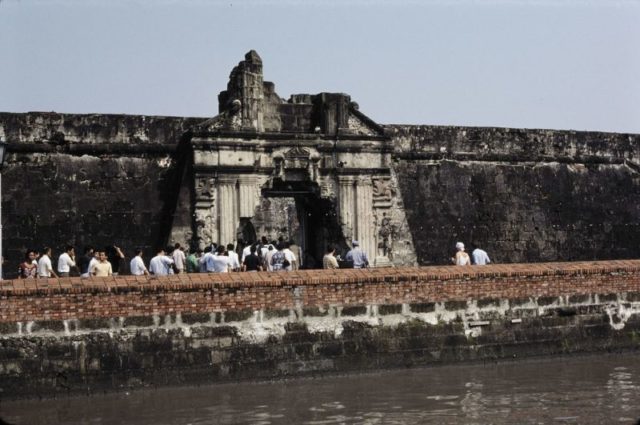
The fort served its purpose for many years until 1880. That year, the city of Manila was heavily damaged by a series of earthquakes dubbed the “Luzon earthquakes.” The fort too suffered tremendously for its edifice and was leveled to the ground. At the turn of the century, the fort raised an American Flag that marked the beginning of the American rule of the Philippines.
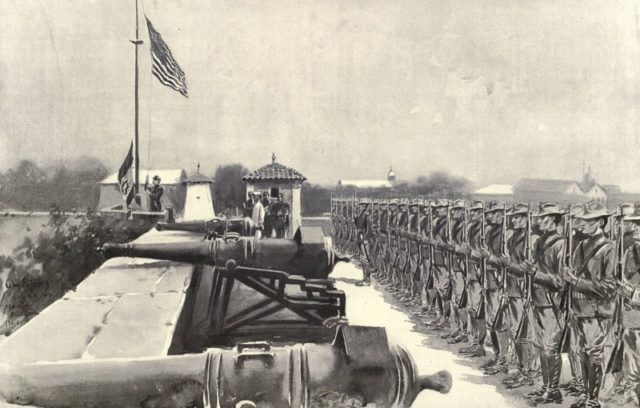
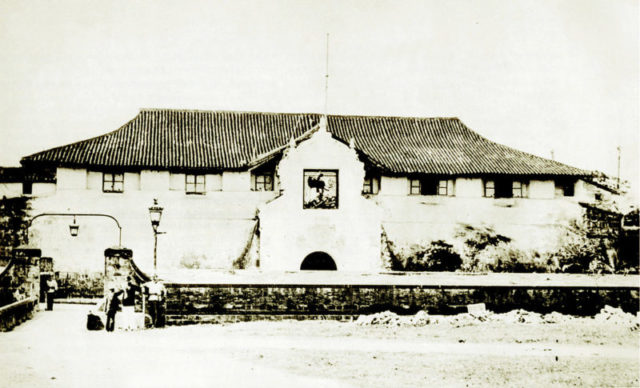
Next followed the Second World War, and during this time, the fort conquered by the Japanese Imperial Army and was used as a prison. The Japanese army was responsible for what will become known in history as the Manila massacre, atrocities that resulted in the death of 100,000 civilians. Many of the prisoners in this fort died of hunger.
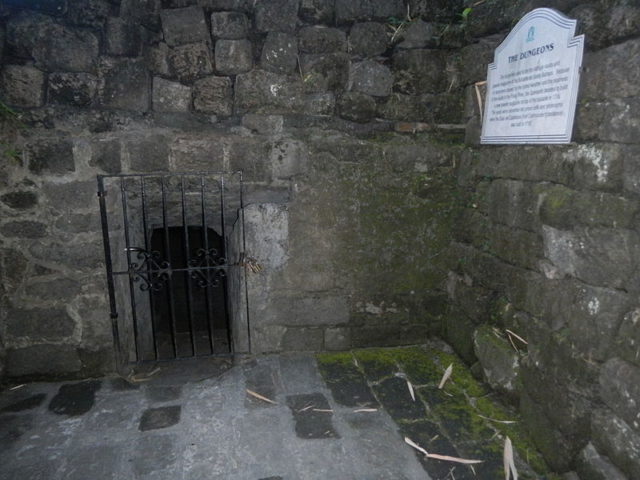
Nowadays, the fort is used as a historical park and is a popular tourist destination. The dungeons and the scars of centuries of war and battles are still evident, especially those from World War II when the fort suffered the most damage.
